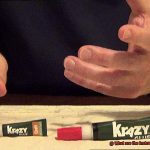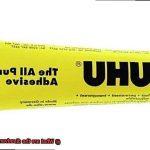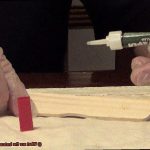Ever thought about how many things in our lives rely on this sticky stuff? From fixing broken toys to crafting art projects, adhesive solutions are seriously impressive.
And guess what? There are two basic categories of glues that serve different purposes.
First up, we have “temporary” or “removable” glue, which lets you stick things together while still being able to separate them later. Then there’s “permanent” glue, the superhero of adhesives that creates an unbreakable bond.
So, get ready for a sticky adventure as we dive into the fascinating world of glues.
What are Glues?
Contents
- 1 What are Glues?
- 1.1 Reactive Glues: Creating Bonds through Chemical Reactions
- 1.2 Non-Reactive Glues: Bonds without Chemical Reactions
- 1.3 Water-based Glues: Easy and Non-Toxic Bonding
- 1.4 Solvent-based Glues: Quick-Drying with Strong Bonds
- 1.5 Hot Melt Glues: Quick and Flexible Bonding
- 1.6 Pressure-sensitive Adhesives: Instant Bonds with Easy Removal
- 2 Reactive Glues
- 3 Types of Reactive Glues
- 4 Epoxy Adhesive
- 5 Cyanoacrylate Adhesive (Super Glue)
- 6 Non-Reactive Glues
- 7 Polyvinyl Acetate (PVA) Adhesive (White Glue or Wood Glue)
- 8 Contact Adhesives
- 9 Conclusion
Glues, also known as adhesives, are versatile substances that play a crucial role in joining different materials together. Whether you’re a DIY enthusiast, a professional in an industry, or simply someone who wants to fix things around the house, understanding the types and properties of glues is essential.
In this comprehensive guide, we will explore what glues are, how they work, and the various types available for different applications.
Reactive Glues: Creating Bonds through Chemical Reactions
Reactive glues require a chemical reaction to form a bond. They come in two parts – a resin and a hardener – which need to be mixed before use. Epoxy adhesives exemplify reactive glues, providing excellent strength and durability. Widely used in construction, automotive, and aerospace industries, reactive glues offer exceptional bonding capabilities.
Non-Reactive Glues: Bonds without Chemical Reactions
Non-reactive glues do not rely on chemical reactions to create bonds. Instead, they employ physical mechanisms like drying or solvent evaporation. Examples include water-based glues, solvent-based glues, hot melt glues, and pressure-sensitive adhesives. Each type offers unique benefits and applications.
Water-based Glues: Easy and Non-Toxic Bonding
Water-based glues contain water as a solvent and are ideal for crafts, paper projects, and woodworking. They are easy to use, non-toxic, and provide good bonding strength for porous materials like wood and paper.
Solvent-based Glues: Quick-Drying with Strong Bonds
Solvent-based glues utilize organic solvents as carriers for the adhesive. They dry quickly and create strong bonds. Commonly used in industrial applications for bonding leather, rubber, or plastics, solvent-based glues provide fast and reliable adhesion.
Hot Melt Glues: Quick and Flexible Bonding
Hot melt glues are solid at room temperature and become liquid when heated. They are commonly used in glue guns and provide quick bonding for various materials. Offering flexibility and easy removal if necessary, hot melt glues are a go-to choice for many applications.
Pressure-sensitive Adhesives: Instant Bonds with Easy Removal
Pressure-sensitive adhesives remain tacky under normal conditions and create an instant bond when pressure is applied. Found in tapes, labels, and sticky notes, they offer excellent adhesion to a wide range of surfaces. Plus, they can be easily removed without leaving residue.
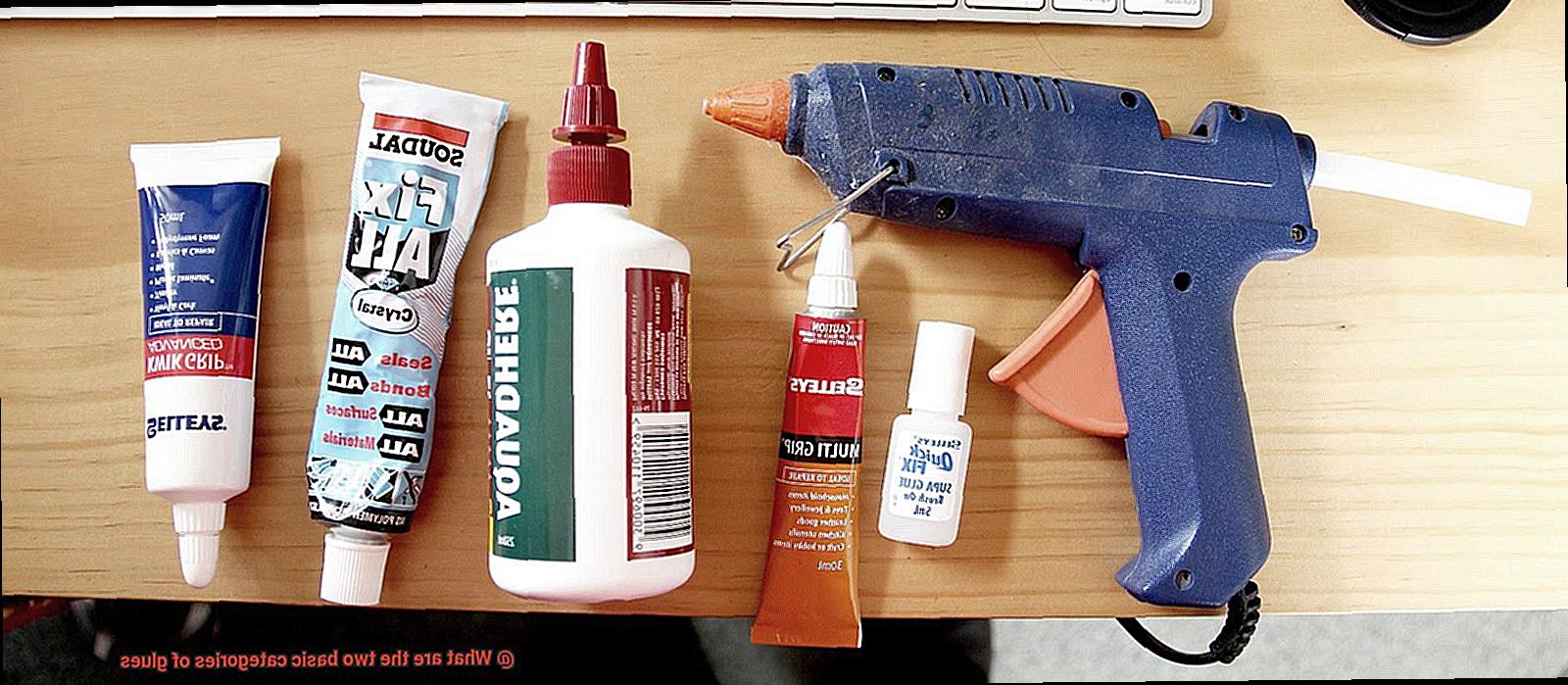
Reactive Glues
Reactive glues, also known as two-component or dual-cure adhesives, are a fascinating category of adhesives that possess superhero-like bonding abilities. These glues create strong bonds by undergoing a chemical reaction when their components are mixed together.
Reactive glues consist of two separate components – a resin and a hardener – which, when combined, initiate a chemical reaction that causes the glue to harden and form a durable bond.
Reactive glues offer a multitude of advantages that make them stand out in the adhesive world. Here are some key benefits:
- Versatility: Reactive glues are like chameleons in the adhesive kingdom, capable of bonding a wide range of materials. From metals to plastics, ceramics to composites, these glues have got you covered for all your DIY needs.
- Strength and Durability: When it comes to holding things together, reactive glues mean business. Epoxy adhesives, a type of reactive glue, are renowned for their exceptional bonding strength and resistance to temperature and chemicals. With reactive glues, you can trust that your projects will withstand the test of time.
- Flexibility: Another advantage of reactive glues is their ability to provide some degree of flexibility. Polyurethane adhesives, for example, offer good impact resistance and elasticity, making them perfect for applications that require a little give.
- Specialty Applications: Reactive glues come in different types tailored for specific tasks. Acrylic-based reactive glues, for instance, are ideal for bonding clear materials like glass or optical lenses due to their transparency and high clarity.
Despite their impressive qualities, reactive glues do have a few limitations to consider:
- Longer Curing Times: While reactive glues offer excellent bonding strength, they often require longer curing times compared to other types of glues. This means you’ll need a bit of patience to allow the glue to fully cure before putting stress on your project.
- Following Instructions: To ensure optimal bonding performance, it’s crucial to follow the manufacturer’s instructions carefully when working with reactive glues. Mixing ratios and application techniques must be followed to achieve the best results.
Types of Reactive Glues
These adhesives have the power to bring together different materials and hold them in place with remarkable strength. Let’s take a closer look at the various types of reactive glues and their unique uses.
One-Component Reactive Glues: The Quick Fixers
Imagine having a broken toy that needs immediate attention. One-component reactive glues are your go-to solution in such situations. These glues come pre-mixed and ready to use straight out of the package, eliminating the need for complicated mixing or waiting for things to dry. They contain a resin and a curing agent, which react when exposed to specific conditions like heat or moisture. This makes one-component reactive glues perfect for quick repairs or projects that require immediate adhesion.
Two-Component Reactive Glues: The Powerhouses
If you’re looking for adhesive strength that can withstand anything, two-component reactive glues are your best bet. These glues require a bit more effort but offer unparalleled bonding power. They consist of two separate components, typically a resin and a hardener, which need to be mixed together before application. Once mixed, a chemical reaction is triggered, creating a super-strong bond between materials. Two-component reactive glues provide excellent resistance to environmental factors like temperature fluctuations or moisture exposure, making them ideal for demanding applications.
Epoxy Glue: The Superhero of Adhesives
For DIY enthusiasts and builders, epoxy glue is the ultimate superhero adhesive. With exceptional strength, durability, and resistance to heat, chemicals, and moisture, epoxy glue can tackle any bonding challenge. It forms a robust bond between materials like ceramics, metals, plastics, or wood. Whether you’re fixing broken objects or constructing model airplanes, epoxy glue has got you covered.
Polyurethane Glue: The Woodworking Wizard
Woodworkers, pay attention. Polyurethane glue is your ally in joining wood and other materials. This adhesive possesses magical flexibility and water resistance, making it perfect for outdoor projects or applications where moisture is a concern. It can also fill gaps or cracks in materials like wood or metal, providing added strength to your creations.
Cyanoacrylate Glue: The Quick-Fix Companion
Crafters and quick-fixers, meet your trusty sidekick – cyanoacrylate glue, also known as super glue. When time is of the essence, this adhesive forms an almost instant bond, making it ideal for small repairs or sticking tiny pieces together. However, exercise caution to avoid gluing your fingers together as cyanoacrylate glue sets rapidly.
Epoxy Adhesive
This powerful glue is known for its exceptional bonding properties and is a must-have in any DIY enthusiast’s toolbox.
So, what exactly is epoxy adhesive? Well, it’s a two-component glue that consists of a resin and a hardener. These two components are stored separately and need to be mixed together in order to activate the adhesive. This process, known as curing, requires a specific ratio of resin to hardener, so be sure to follow the manufacturer’s instructions for the best results.
One of the standout features of epoxy adhesive is its incredible strength. Once cured, it forms an unbreakable bond that can withstand heavy loads and extreme temperatures.
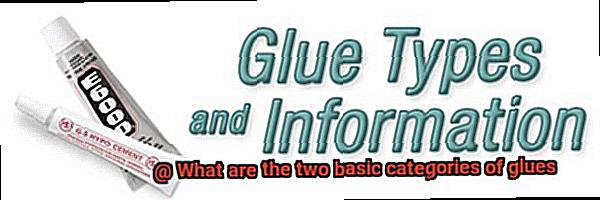
This makes it ideal for a wide range of applications, from repairing broken ceramics to bonding metal components together.
Not only is epoxy adhesive strong, but it also offers excellent resistance to chemicals, water, and weathering. This means it can be used both indoors and outdoors, even in environments with harsh conditions.
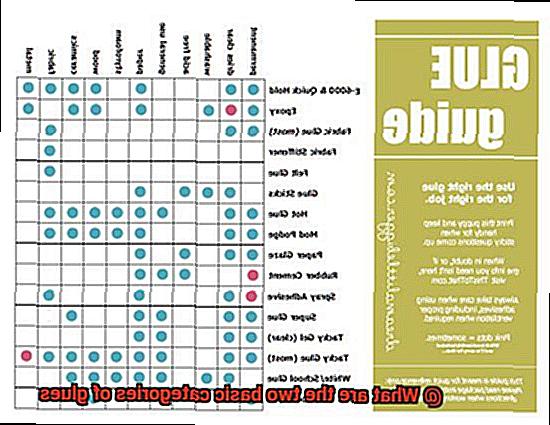
So, whether you’re fixing a leaky pipe or building a sturdy outdoor structure, epoxy adhesive has got you covered.
Another great thing about epoxy adhesive is its gap-filling properties. It has the ability to fill in small gaps or irregular surfaces for a more secure bond. This means you don’t have to worry about perfect alignment or smooth surfaces when using epoxy adhesive – it will do the job flawlessly.
Now, let’s talk about the different formulations of epoxy adhesive. There are fast-setting epoxies that cure within minutes, perfect for those quick fixes when time is of the essence. On the other hand, there are slow-curing epoxies that allow for more precise positioning before bonding. This is especially useful when working on intricate projects that require careful alignment.
But wait, there’s more. Epoxy adhesives also come in specialized formulations for specific applications. Need to repair your car’s exhaust system? There are heat-resistant epoxies designed specifically for automotive repairs. Planning on fixing something underwater? No problem. There are even epoxies that can be used for marine applications.
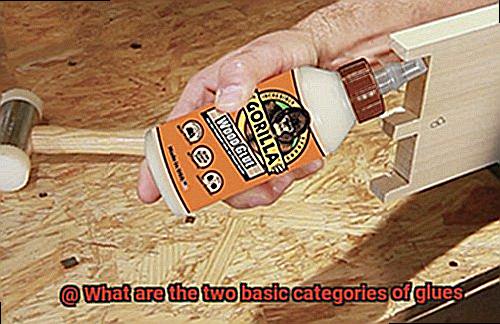
While epoxy adhesive offers many benefits, it’s important to note that it does have a few limitations. It can be more expensive compared to other types of glues, but trust me, the investment is worth it. Additionally, epoxy adhesive has a strong odor and can cause skin irritation, so handle with care and make sure to work in a well-ventilated area.
Cyanoacrylate Adhesive (Super Glue)
Cyanoacrylate adhesive, also known as super glue, is a remarkable adhesive that possesses incredible bonding powers and lightning-fast action. This adhesive is like a miniature superhero in a tube, ready to save the day.
First and foremost, cyanoacrylate adhesive is all about speed. It forms an instant bond within seconds, faster than you can even say the word “glue.” Whether you need to fix broken items or secure parts together, this adhesive gets the job done in no time. Just ensure that the surface is clean and dry for optimal results.
Strength is another superpower of cyanoacrylate adhesive. Once it cures, it creates a tough and durable bond capable of withstanding various stresses, including impacts and vibrations. It can handle materials like metal, plastic, rubber, and ceramics with ease. However, keep in mind that it may not perform as effectively on porous surfaces or certain types of wood.
Temperature and moisture are no match for this adhesive either. It can withstand extreme temperatures without compromising its strength and is resistant to water and most solvents. Even in humid or wet environments, your bond will remain strong.
However, cyanoacrylate adhesive does have one slight weakness – flexibility. Once it cures, it becomes rigid and lacks elasticity. While it may not be ideal for applications requiring movement or flexibility, it excels in most everyday bonding situations.
When it comes to application, cyanoacrylate adhesive offers various forms to suit different needs. Liquid cyanoacrylate is the most common type and works well for general bonding. Gel cyanoacrylate is thicker and perfect for vertical or overhead applications where you don’t want the glue to drip or run. Aerosol cyanoacrylate is fantastic for large or irregular surfaces as it evenly sprays over the area.
Non-Reactive Glues
Fed up with messy mixing and curing processes? Fear not, because non-reactive glues are here to save the day. These glue superheroes rely on physical mechanisms to create a strong bond between surfaces, offering convenience and quick bonding like no other. Let’s dive into the world of non-reactive glues and explore their advantages and limitations.
Advantages of Non-Reactive Glues:
- Quick and Convenient: Non-reactive glues are ready to use straight out of the tube, eliminating the need for mixing and curing time. No more waiting around for glue to dry – just apply the adhesive and get on with your project.
- Initial Tack and Bond Strength: Non-reactive glues provide excellent initial tack, which means materials can be held together immediately after application. Say goodbye to worrying about your project falling apart while waiting for the glue to set.
- Versatility: Non-reactive glues come in various forms to suit different applications. Pressure-sensitive adhesives allow for easy repositioning, making them perfect for crafts and temporary bonds. Contact adhesives are ideal for bonding materials that can’t be clamped, providing a strong and durable bond. Hot melt adhesives solidify quickly upon cooling, making them great for fast bonding needs.
Limitations of Non-Reactive Glues:
Temperature and Chemical Resistance: While non-reactive glues offer convenience, they may not be as resistant to high temperatures or chemical exposure as reactive glues. It’s crucial to consider the specific requirements of your project before choosing the right type of glue.
Polyvinyl Acetate (PVA) Adhesive (White Glue or Wood Glue)
Polyvinyl Acetate (PVA) adhesive, also known as white glue or wood glue, is like a superhero in the world of non-reactive glues. It saves us from messy mixing and curing processes because it’s ready to use straight out of the tube. No more wasting time on preparation.
PVA adhesive is a water-based glue that has become a staple in woodworking projects. Its strong bond and clear drying properties give your projects a professional finish. But its uses go beyond wood – PVA adhesive can be applied to surfaces like paper, fabric, and even some plastics. Talk about versatility.
One of the best things about PVA adhesive is its non-toxic nature. You can use it with peace of mind, knowing that it’s safe for both adults and kids. So go ahead and get crafty with your little ones – PVA adhesive is perfect for all your family-friendly activities.
And let’s not forget about its quick drying time. Within 15-30 minutes, depending on the brand and conditions, your project will be good to go. Just apply a thin layer of glue to both surfaces, press them firmly together, and use clamps or weights to keep them in place until the glue fully dries.
Now, where else can you use this magical glue? The possibilities are endless. PVA adhesive is commonly used in paper crafts like scrapbooking or card making because it provides a secure bond without wrinkling or warping the paper. It’s also great for fabric crafts, allowing you to attach patches or appliques to clothing or accessories.
But remember, PVA adhesive has its limits. It may not hold up well in wet or humid conditions due to its limited water resistance. So if your project requires water resistance, consider using a different type of glue like epoxy or polyurethane adhesive.
Contact Adhesives
Contact adhesives, also known as contact cement, are a versatile type of adhesive that create a strong bond when two surfaces come in contact with each other. They are commonly used in industries such as construction, automotive, and crafts. There are two main categories of contact adhesives: solvent-based and water-based.
Solvent-based contact adhesives have been around for years and are known for their high strength and fast-drying properties. Made from a blend of synthetic rubber and organic solvents, they create an instant strong bond when two surfaces come in contact. These adhesives are perfect for situations where immediate bonding is required, such as time-sensitive projects. They also have excellent heat resistance, making them ideal for materials that might face high temperatures.
However, solvent-based adhesives can be tricky to handle due to their strong odor and flammable nature. Safety precautions should be taken, such as working in a well-ventilated area and avoiding direct skin contact.
Water-based contact adhesives have gained popularity in recent years due to their lower VOC content and environmental friendliness. Formulated with a water-based polymer dispersion, they emit fewer harmful fumes during application. These adhesives are user-friendly with lower odor and flammability compared to solvent-based adhesives. Cleaning up after using water-based adhesives is also easier. They offer good resistance to moisture, making them perfect for projects that might encounter water or humidity.
However, it’s important to note that water-based contact adhesives may have slightly lower initial bond strength compared to solvent-based adhesives. Sufficient drying and curing time should be allowed to achieve the desired bond strength.
Esvb64fUQ10″ >
Conclusion
When it comes to glues, there are two fundamental categories that you should know about. These categories are essential in understanding the different properties and uses of glues. So, what are these two categories? Let’s dive in.
The first category is known as “adhesive glues.” These glues work by creating a strong bond between two surfaces. They are commonly used in construction, woodworking, and other industries where a durable and long-lasting bond is required. Adhesive glues come in various forms, such as liquid, gel, or solid sticks, giving you options depending on your specific needs.
On the other hand, we have the second category called “cohesive glues.” Unlike adhesive glues that bond two different surfaces together, cohesive glues create a bond within the same material itself. They are often used for repairs or sealing purposes. Cohesive glues can be found in forms like tapes or sealants, providing flexibility and convenience for different applications.
By understanding these two basic categories of glues – adhesive and cohesive – you can make informed decisions when choosing the right glue for your project. Whether you need a strong bond between materials or a reliable sealant for repairs, knowing which category suits your needs will help you achieve the best results.



